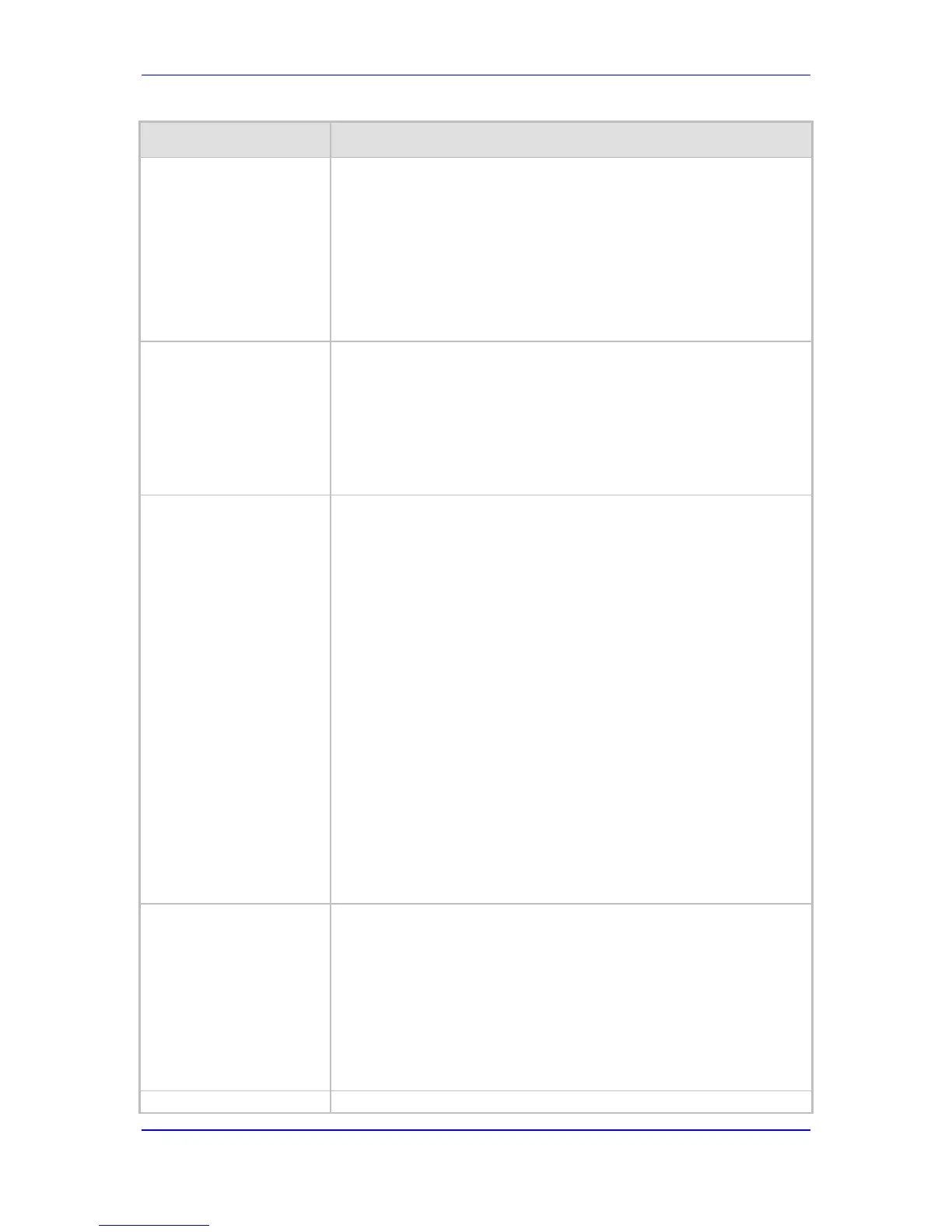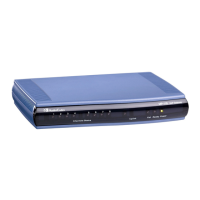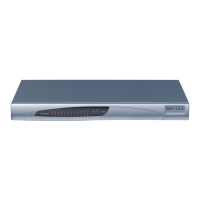Identity headers are present, the number is obtained from the
second P-Asserted-Identity header.
c. If only one P-Asserted-Identity header is present, the calling
number is obtained from it.
Notes:
The "From" and "Pai2" values are not case-sensitive.
Once a URL is selected, all the calling party parameters are set from
this header. If P-Asserted-Identity is selected and the Privacy header
is set to 'id', the calling number is assumed restricted.
[SelectSourceHeaderFor
CalledNumber]
Determines the SIP header used for obtaining the called number
(destination) for IP-to-Tel calls.
[0] Request-URI header = (Default) Obtains the destination number
from the user part of the Request-URI.
[1] To header = Obtains the destination number from the user part of
the To header.
[2] P-Called-Party-ID header = Obtains the destination number from
the P-Called-Party-ID header.
Web/EMS: Forking
Handling Mode
[ForkingHandlingMode]
Determines how the device handles the receipt of multiple SIP 18x
forking responses for Tel-to-IP calls. The forking 18x response is the
response with a different SIP to-tag than the previous 18x response.
These responses are typically generated (initiated) by Proxy /
Application servers that perform call forking, sending the device's
originating INVITE (received from SIP clients) to several destinations,
using the same CallID.
[0] Parallel handling = (Default) If SIP 18x with SDP is received, the
device opens a voice stream according to the received SDP and
disregards any subsequently received 18x forking responses (with or
without SDP). If the first response is 180 without SDP, the device
responds according to the PlayRBTone2TEL parameter and
disregards the subsequent forking 18x responses.
[1] Sequential handling = If 18x with SDP is received, the device
opens a voice stream according to the received SDP. The device re-
opens the stream according to subsequently received 18x responses
with SDP, or plays a ringback tone if 180 response without SDP is
received. If the first received response is 180 without SDP, the
device responds according to the PlayRBTone2TEL parameter and
processes the subsequent 18x forking responses.
Note: Regardless of this parameter setting, once a SIP 200 OK
response is received, the device uses the RTP information and re-
additional SIP 2xx received from the Proxy within this timeout. Once this
timeout elapses, the device ignores any subsequent SIP 2xx.
The number of supported forking calls per channel is 4. In other words,
for an INVITE message, the device can receive up to 4 forking
responses from the Proxy server.
The valid range is 0 to 30. The default is 30.
